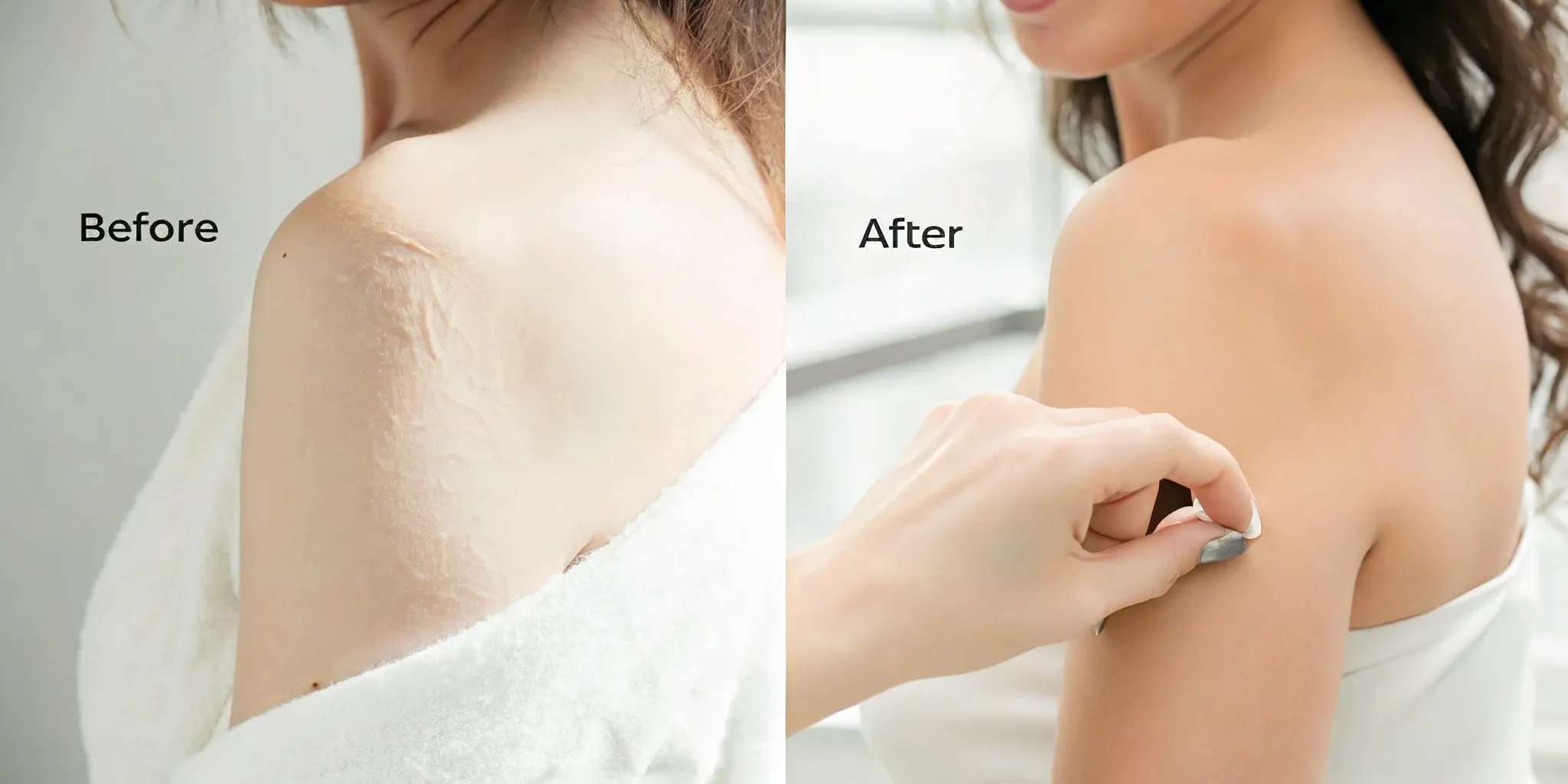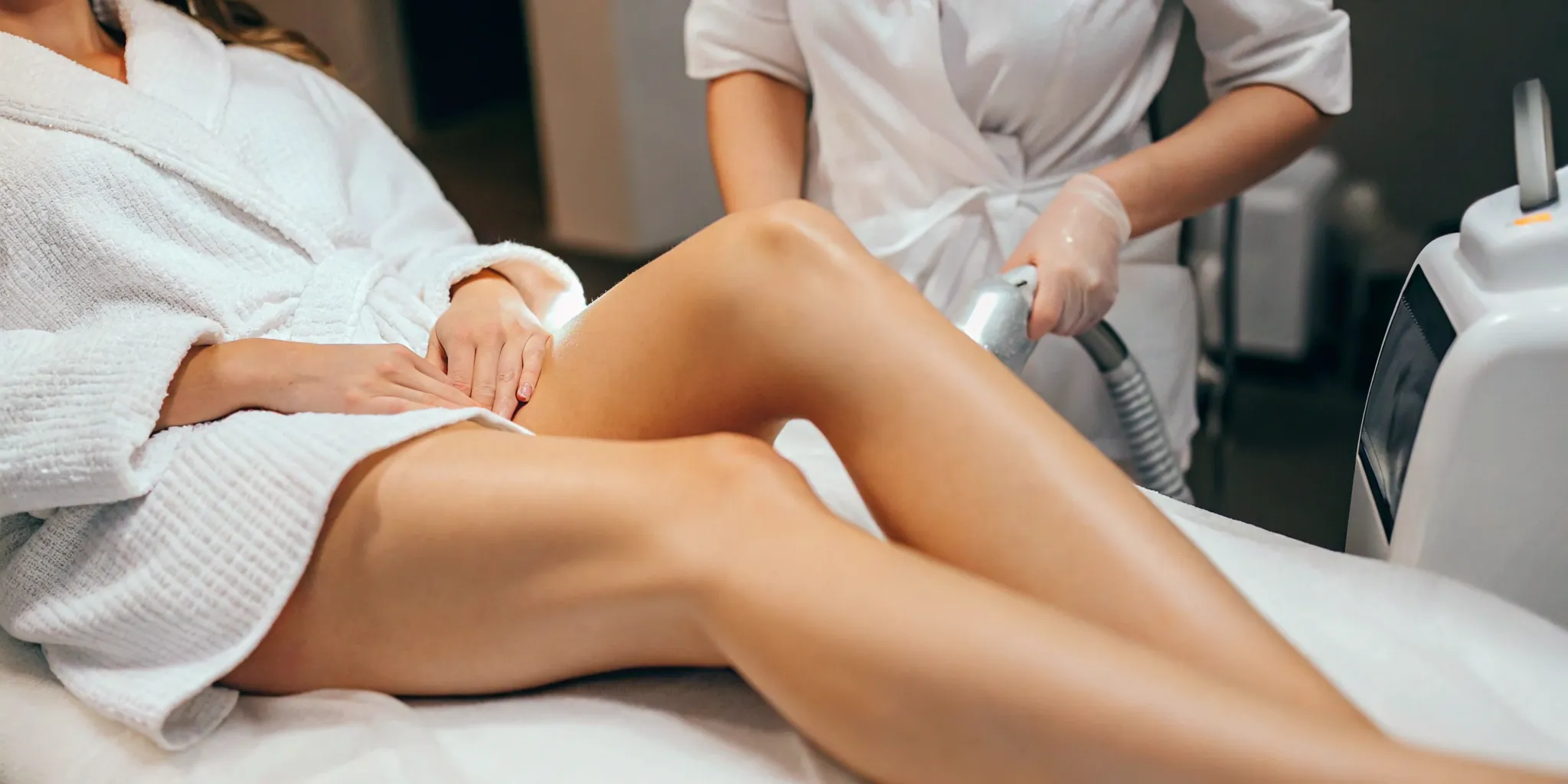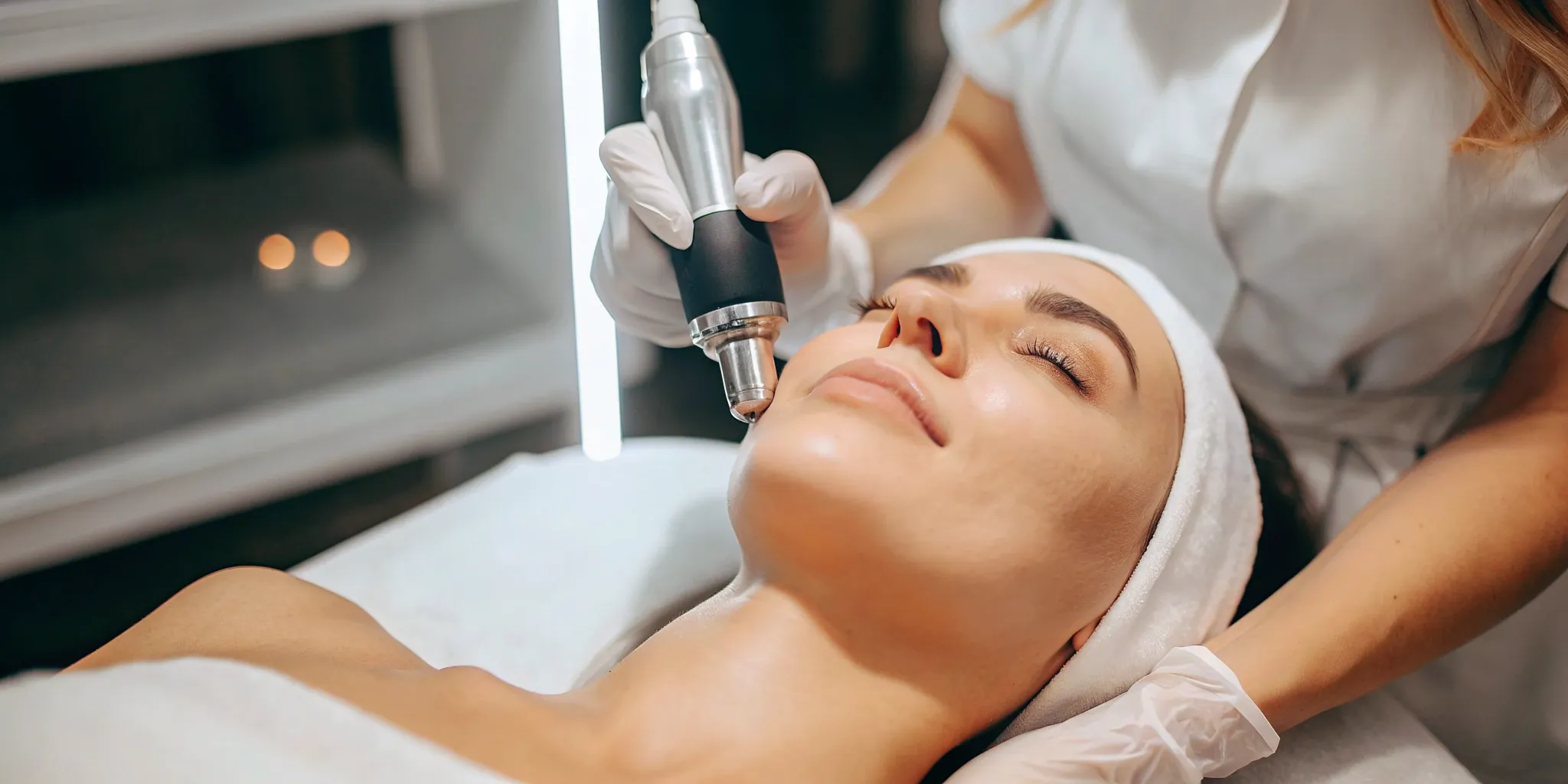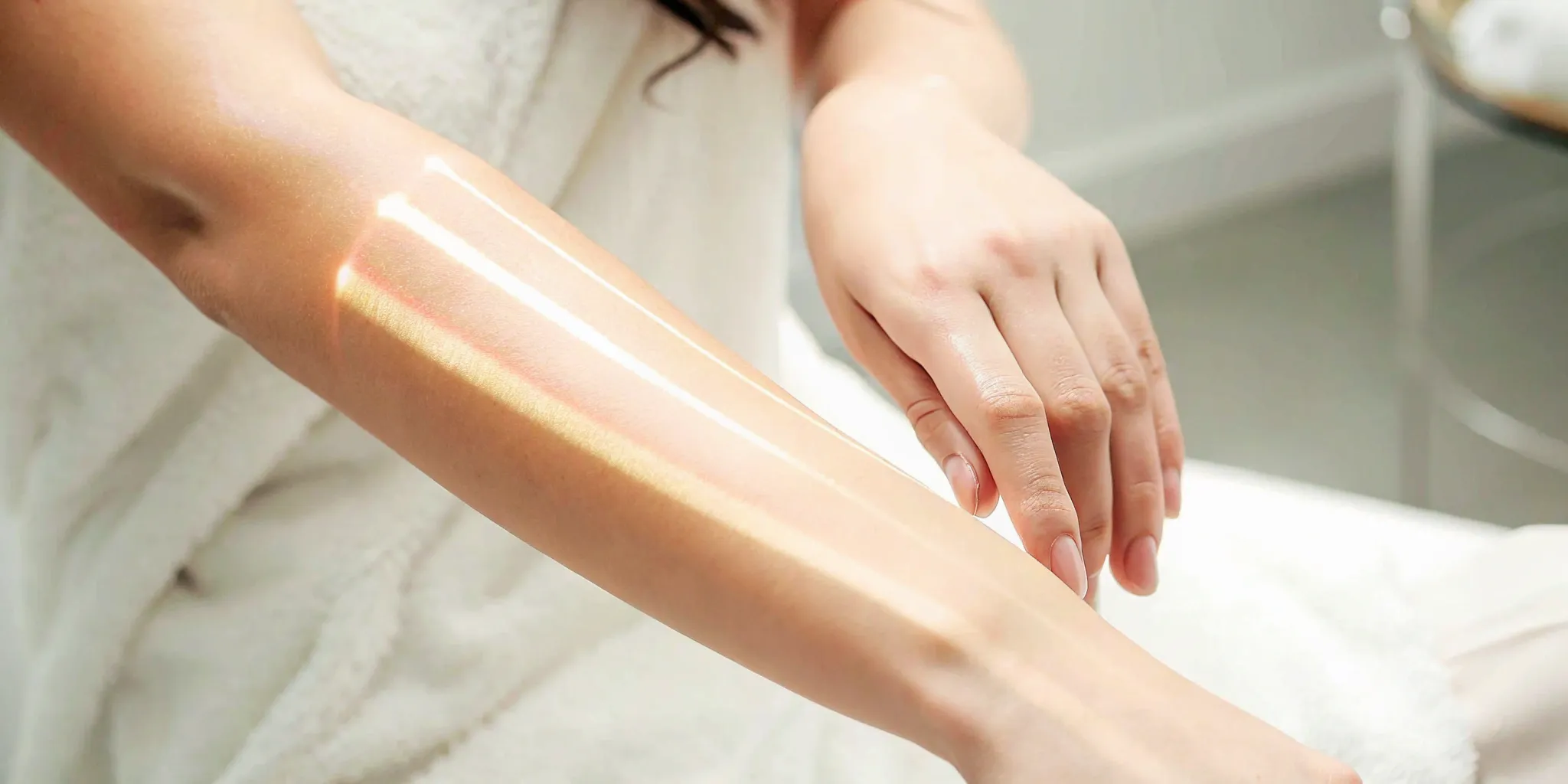Your personal style evolves, and it’s only natural that your skin should be able to evolve with you. A tattoo that no longer reflects who you are can hold you back, but deciding to remove it is a powerful step forward. Think of it as an investment in your confidence and in feeling completely comfortable in your own skin. This guide is designed to help you make that investment wisely. We’ll explore all the factors that contribute to a successful outcome, from the cost and timeline to choosing the right provider for your laser tattoo removal journey.
Key Takeaways
- Set Realistic Expectations for Your Timeline: Tattoo removal is a gradual fading process that happens over several sessions. Factors like ink color and tattoo placement mean your journey is unique, so focus on progress, not speed.
- Vet Your Provider Carefully: The most important decision you’ll make is who performs your treatment. Prioritize a certified specialist with advanced laser technology to protect your skin and get the best possible outcome.
- Your Healing Habits are Half the Battle: The laser does its job in the clinic, but your work starts at home. Diligent aftercare, especially sun protection, is essential for preventing complications and achieving clear skin.
What is Laser Tattoo Removal?
If you’re rethinking some ink, you’re not alone. Laser tattoo removal is a popular and effective way to clear away a tattoo that no longer fits your story. The process uses advanced laser technology to safely break down the ink in your skin, allowing your body to naturally flush it out over time. Think of it as a gradual fading process that happens over a series of treatments. It’s a straightforward and medically supervised method that has become the gold standard for saying goodbye to unwanted tattoos. At Ultimate Image MedSpa, we use this technology to help you achieve clear skin and feel confident in your look.
How Does the Laser Work?
The science behind laser tattoo removal is pretty fascinating. The laser sends an intense pulse of light into your skin, specifically targeting the tattoo ink. This light energy is absorbed by the ink particles, causing them to shatter into tiny fragments. Once the ink is broken down, your body’s immune system takes over. Your white blood cells act like a cleanup crew, grabbing these microscopic ink pieces and carrying them away to be naturally processed and eliminated from your body. This is why you see the tattoo fade gradually with each session. Black ink is typically the easiest to treat because it absorbs all laser wavelengths, while colored inks require more specific laser types to break them down effectively.
What Kind of Lasers Are Used?
Not all lasers are created equal, especially when it comes to tattoo removal. Different ink colors respond to different wavelengths of light, which is why a professional clinic needs a variety of lasers to get the job done right. For example, a Q-switched Nd:YAG laser is a workhorse for darker inks like black and blue, while an alexandrite laser is great for tackling stubborn green pigments. Having the right tool for the job is crucial for both safety and results. Using the wrong laser can be ineffective or even damage your skin. That’s why it’s so important to choose a provider who has invested in a range of advanced services and technologies to treat your specific tattoo colors.
The Pros and Cons
Like any cosmetic procedure, it’s smart to weigh the pros and cons. On the plus side, laser treatment is widely considered the safest and most effective method for removing tattoos, with a much lower risk of scarring compared to older techniques like dermabrasion. The biggest pro, of course, is achieving significant fading or complete removal of your unwanted ink. However, it’s important to have realistic expectations. Some common side effects include temporary redness, swelling, and blistering. There’s also a small risk of infection, skin discoloration, or scarring, but these are minimized when you work with a certified specialist. While complete removal is the goal, some tattoos may only fade significantly. The best first step is to contact us for a consultation to discuss what you can expect for your unique tattoo.
Your Treatment Journey, Step-by-Step
Thinking about laser tattoo removal can feel like a big step, but knowing what to expect can make the entire process feel much more manageable. From your first chat with a specialist to the moment the laser does its work, each step is designed with your comfort and results in mind. Let’s walk through what your treatment journey will look like, so you can feel confident and prepared from day one. We’ll cover everything from the initial meeting to what happens during the procedure itself, ensuring you have all the information you need.
The Initial Consultation
This first meeting is all about you and your goals. You’ll sit down with one of our specialists to discuss the tattoo you want to remove. We’ll take a look at your skin and the tattoo itself, noting its age, colors, and whether it was done by a professional or an amateur. This helps us create a personalized treatment plan just for you. It’s also the perfect time for you to ask any questions you have. We want you to feel completely comfortable and informed, so don’t hesitate to bring a list! Ready to get started? You can schedule a consultation with our team to begin your journey.
How to Prepare for Your Session
A little prep work goes a long way in making your laser tattoo removal successful. The most important rule is to protect your skin from the sun. For at least two weeks before your appointment, avoid direct sun exposure on the treatment area. Sun-damaged skin can be more sensitive and may not respond as well to the laser. If you can’t avoid the sun, be diligent about applying a broad-spectrum sunscreen with at least SPF 30. Keeping your skin in its natural, healthy state gives the laser the best possible canvas to work on, leading to safer and more effective tattoo removal results.
What Happens During the Procedure
When you arrive for your treatment, we’ll make sure you’re comfortable. You’ll be given protective eyewear, and then the specialist will begin. The laser device will be passed over your tattoo, delivering quick pulses of light energy. These light pulses are absorbed by the tattoo ink, breaking the pigment into tiny particles. Think of it as shattering a large rock into tiny pebbles. Over the following weeks, your body’s immune system naturally flushes these microscopic ink particles away. The length of the session depends on the size of your tattoo—a small design might only take a few minutes, while a larger piece will take more time. Our laser tattoo removal process is designed to be as efficient as possible.
Let’s Talk About Pain: Your Options
This is often the first question people ask, and it’s a valid one! Most people say that laser tattoo removal feels like a rubber band snapping against the skin. While it can be uncomfortable, many find it less painful than getting the tattoo in the first place. The sensation is also very quick, lasting only as long as the laser is pulsing. We are committed to making your experience as comfortable as possible. We can apply a topical numbing cream before the procedure to help manage any discomfort. We’ll discuss all your pain management options during your consultation to find what works best for you.
How Long Will It Take?
One of the first questions everyone asks is, “How long until it’s gone?” The honest answer is: it’s a process. Laser tattoo removal isn’t a single event but a series of treatments that work with your body to clear away unwanted ink. The timeline is different for everyone, but understanding the key factors will help you set clear expectations for your journey. Let’s walk through what your personal timeline might look like.
How Many Sessions Will You Need?
Think of tattoo removal as a marathon, not a sprint. While some people see results faster, most clients need between 6 to 12 sessions to achieve their desired outcome. Some clinical sources even note a range of 4 to 15 sessions depending on the tattoo’s complexity. The exact number of treatments depends entirely on your unique tattoo and skin. During your initial consultation, we’ll assess your tattoo and give you a more personalized estimate for your laser tattoo removal plan. This ensures you have a clear picture of the commitment from the very beginning.
Factors That Influence Your Results
So, why does the number of sessions vary so much? Several factors come into play. First, the ink itself matters. Black ink is typically the easiest to treat because it absorbs all laser wavelengths, while vibrant colors like green and blue can be more stubborn. The age and quality of your tattoo also play a role. Older tattoos are often easier to remove than fresh, dense ones. The laser works by breaking the ink into tiny particles, and your body’s immune system then needs time to flush those particles out. This is why sessions are spaced several weeks apart—to give your body the time it needs to do its part.
Setting Realistic Expectations
It’s important to go into this process with realistic goals. While our technology is incredibly advanced, complete 100% removal isn’t always possible for every tattoo. Some stubborn ink colors may leave behind a faint shadow or “ghost” image. In fact, studies show that while significant fading is very common, complete clearance happens in about half of all cases. The goal is to lighten the tattoo to a point where it’s barely noticeable or can be easily covered. We are committed to providing a wide range of services to help you achieve the best possible aesthetic outcome, and we’ll be transparent about what you can expect.
Tracking Your Fading Progress
It can be hard to notice slow changes when you see your tattoo every day. That’s why we recommend taking photos to track your progress! You’ll likely start to see noticeable fading after your first three sessions, and comparing pictures side-by-side is a fantastic way to see how far you’ve come. It’s incredibly motivating to watch the ink disappear over time. This visual diary helps you stay positive and committed to the process. Ready to start your own fading journey? Contact us to schedule a consultation and begin planning your first session.
Breaking Down the Cost
Let’s talk about one of the biggest questions on everyone’s mind: how much does laser tattoo removal cost? It’s a practical and important part of your decision-making process. The final price tag isn’t a single number but a total based on your unique tattoo and treatment plan. Think of it as an investment in yourself and your skin.
The total cost depends on how many sessions you need, and that number is influenced by several key factors we’ll explore below. The best way to get a clear picture of what your specific treatment will cost is to come in for a consultation. During this meeting, we can assess your tattoo, discuss your goals, and create a personalized plan that fits your budget. We believe in complete transparency, so you’ll know exactly what to expect before you begin.
Average Cost Per Session
On average, you can expect a single laser tattoo removal session to cost somewhere between $150 and $200. It’s helpful to use this as a general guideline, but remember that it’s not a fixed price. The final cost per session can vary based on the clinic’s location and the technology they use.
The most accurate way to understand the cost for your specific tattoo is to schedule a consultation. We can give you a precise quote after seeing the tattoo in person. This initial meeting allows us to create a treatment plan tailored just for you, ensuring you get the most effective results for your investment.
What Affects the Final Price?
Several factors come together to determine the total cost of your tattoo removal. The size of your tattoo is the most obvious one—a larger piece will naturally require more time and more sessions than a small design. The colors of your ink also play a big role. Black ink is typically the easiest for the laser to break down, while lighter and more vibrant colors like green, blue, and yellow can be more stubborn and may require additional treatments.
The age of your tattoo matters, too. An older, already faded tattoo often disappears more quickly than a fresh, dark one. Finally, the location of the tattoo on your body can influence the process, as areas with better circulation tend to heal faster. Our laser tattoo removal technology is designed to handle a wide range of inks and complexities, and we’ll walk you through all of these variables during your consultation.
Payment and Financing Options
Since tattoo removal is an investment, it’s important to have a clear financial plan. We understand that paying for multiple sessions upfront isn’t always feasible, and we want to make this process as accessible as possible for you. During your consultation, don’t hesitate to ask about the payment and financing options we have available.
Many clinics offer payment plans that allow you to spread the cost over the course of your treatment. We are committed to helping you achieve your goals, and that includes finding a payment structure that you feel comfortable with. Your confidence is our priority, and we’re here to support you every step of the way, so let’s talk about a plan that works for your budget.
Will Insurance Cover It?
This is a common question, and the answer is almost always no. Because tattoo removal is considered a cosmetic procedure, it is generally not seen as medically necessary by insurance providers. As a result, most insurance companies will not cover the cost of the treatments.
You should plan for tattoo removal to be an out-of-pocket expense. Knowing this from the start helps you budget accordingly and explore the payment options we discussed. While it may not be covered by insurance, many people find the confidence that comes from removing an unwanted tattoo to be a worthwhile personal investment.
After Your Session: The Healing Process
The work isn’t over once you leave our spa—in fact, what you do at home is just as important as the treatment itself. Proper aftercare is your secret weapon for achieving the best possible results from your laser tattoo removal and ensuring your skin heals beautifully. Think of it as a partnership between you and your technician. We handle the advanced laser work, and you handle the TLC at home.
Your body does the heavy lifting of flushing out the shattered ink particles, and how you care for the treated area can make a huge difference in the speed and smoothness of that process. Following a solid aftercare plan helps minimize side effects, prevents complications like infection, and sets you up for success at your next appointment. We’ll give you a detailed guide, but here’s a look at what you can expect during the healing journey.
Your Immediate Aftercare Plan
Right after your session, your skin will need some immediate attention to calm it down and kickstart the healing process. For the first few days, your main goals are to reduce swelling, prevent infection, and protect the sensitive skin. We’ll provide you with specific instructions, but a typical plan involves gently applying an ice pack to the area to soothe any discomfort or swelling.
You’ll also want to apply a thin layer of antibiotic ointment to keep the area clean and hydrated. Cover it with a sterile bandage or wrap, changing it as directed to keep the site dry and pristine. If you ever have questions about your personalized aftercare plan, don’t hesitate to contact us.
Long-Term Skin Care Tips
As your skin moves past the initial healing phase, your focus will shift to long-term care. It’s completely normal for the area to form scabs or feel dry and itchy—this is a sign that your body is healing. The most important rule? Do not pick at the scabs! Picking can lead to scarring and interfere with the removal process.
To keep your skin comfortable, continue to apply a good, unscented moisturizer or petroleum jelly under the bandage. This keeps the skin hydrated and can prevent the scabs from getting too dry or sticking to the dressing. For the first day or two, it’s also a good idea to avoid strenuous exercise, hot tubs, and saunas to prevent irritation.
How to Manage Common Side Effects
It’s common to experience some redness, swelling, and tenderness in the treated area—similar to a sunburn. These effects are temporary and a normal part of your body’s response to the laser. You can continue to use ice packs as needed for comfort and take over-the-counter pain relievers if you feel sore. Blistering can also occur, and it’s crucial not to pop them, as they form a sterile barrier that protects your healing skin.
While rare, it’s good to be aware of potential side effects like infection or changes in skin pigmentation. Following your aftercare instructions is the best way to prevent these issues. At Ultimate Image MedSpa, we prioritize your safety across all our services and are here to support you.
Why Sun Protection is Non-Negotiable
This is a big one: you must protect the treated area from the sun. Sun exposure can cause serious complications, including hyperpigmentation (darkening of the skin) or hypopigmentation (lightening of the skin), which can be permanent. It can also make the laser treatment less effective, potentially requiring more sessions to get the results you want.
For at least a few weeks before and after each session, keep the area completely out of direct sunlight. If you can’t cover it with clothing, use a broad-spectrum sunscreen with an SPF of 30 or higher. Making sun protection a non-negotiable habit will protect your investment and give you the clear, even-toned skin you’re working toward.
How to Choose the Right Provider
Finding the right person to remove your tattoo is the single most important decision you’ll make in this process. The technology is crucial, but the skill and experience of the person operating the laser will ultimately determine the quality of your results and the safety of your skin. A great provider will guide you through every step, set realistic expectations, and prioritize your health above all else. Think of it like choosing any other medical professional—you want someone with proven expertise, a clean and safe environment, and a team that makes you feel comfortable and confident. Taking the time to research your options and ask the right questions upfront will save you time, money, and potential frustration down the road. It’s the best way to ensure your tattoo removal journey is a smooth and successful one.
Check for Certifications and Training
When you start your search, look for a clinic where treatments are performed by or supervised by a board-certified medical professional. This certification means they have extensive, specialized training in skin health and cosmetic procedures. If a certified laser technician is performing the removal, make sure they have significant experience and are working under the guidance of an on-site doctor. Don’t hesitate to ask about their qualifications and how many tattoo removal procedures they’ve performed. A reputable clinic will be transparent and proud of their team’s credentials, as it speaks directly to their commitment to providing safe and effective services.
Ask About Their Technology
Not all lasers are created equal, so it’s smart to ask what kind of technology the clinic uses. The gold standard for tattoo removal includes Q-switched and picosecond lasers. These advanced systems deliver ultra-short pulses of energy that shatter ink particles without overheating and damaging the surrounding skin. This modern technology often leads to more effective removal, especially for stubborn colors, and can reduce the total number of sessions you need. A clinic that invests in high-quality laser tattoo removal equipment is also investing in your results and safety, so feel empowered to ask about the tools they’ll be using for your treatment.
Review Their Safety Protocols
A professional medspa operates with safety as its top priority. During your consultation or first visit, take a look around and observe their safety measures. For instance, everyone in the treatment room—that includes you and the technician—must wear protective safety glasses specifically designed for the laser’s wavelength. If your tattoo is near your eyes, you should be given opaque eye shields for complete protection. The treatment room should also be properly secured, with covered windows to prevent any laser light from escaping. These protocols are non-negotiable and are a clear sign that you’re in capable, professional hands.
Key Questions to Ask Your Specialist
Your initial consultation is the perfect time to get all your questions answered and ensure you feel completely comfortable. A good specialist will also have plenty of questions for you about your tattoo’s age, if it’s a cover-up, and your skin’s history with healing or scarring.
Come prepared with your own list of questions, such as:
- Based on my tattoo and skin type, how many sessions do you estimate I’ll need?
- What are the most likely side effects I can expect?
- Can I see before-and-after photos of previous clients with similar tattoos?
- What does your aftercare plan involve?
This conversation will help you build a clear picture of the process and what to expect. When you’re ready, you can contact us to schedule your own personal consultation.
What Determines Your Success?
While the goal of laser tattoo removal is a clean slate, the journey there looks a little different for everyone. Think of it less like an eraser and more like a fading process that your body completes over time. Several key factors influence how quickly and completely your tattoo will disappear, and your provider will assess these during your consultation to create a realistic treatment plan. Understanding these elements from the start helps set clear expectations and gives you a better picture of the road ahead. From the color of your ink to your daily habits, each piece of the puzzle plays a part in revealing the clear skin underneath. It’s a team effort between you, your provider, and your own body’s healing processes.
How Your Skin Type Plays a Role
The contrast between your skin tone and the tattoo ink is a major factor in the removal process. Lasers work by targeting pigment, so the ideal scenario is dark ink on lighter skin. For individuals with darker skin tones, the laser must be carefully calibrated to target the ink pigment without affecting the natural melanin in the skin. While it’s absolutely possible to treat tattoos on all skin types, darker skin has a higher risk of pigmentation changes if not treated correctly. This is why choosing an experienced provider with advanced technology is so important—they will know exactly how to adjust the laser settings to protect your skin and achieve the best results.
Tattoo Ink, Color, and Age
Not all inks are created equal. The color, density, and age of your tattoo significantly affect how many sessions you’ll need. As a general rule, black ink is the easiest to remove because it absorbs all laser wavelengths. Colorful tattoos are more complex. Different colors respond to different laser wavelengths, with greens, blues, and pastels being notoriously stubborn. The age of your tattoo also matters. An older, slightly faded tattoo is often easier to clear than a brand-new one with dense, vibrant ink. A professional tattoo artist’s work might also be more challenging to remove than an amateur tattoo because the ink is typically applied more deeply and evenly.
Does the Tattoo’s Location Matter?
Believe it or not, where your tattoo is on your body can influence how quickly it fades. The secret is blood circulation. Your body’s immune system is responsible for flushing away the tiny ink particles after the laser shatters them. Areas with better blood flow allow this process to happen more efficiently. Tattoos on the torso, neck, and upper arms tend to fade faster because they are closer to your heart and have strong circulation. Tattoos on your extremities, like your hands, feet, or ankles, generally take longer to remove because these areas have less blood flow, making it a slower journey for your body to clear the ink.
Lifestyle Habits That Can Help
You have more control over your results than you might think. Your body does the heavy lifting of clearing the ink, so supporting your immune system can make a real difference. Simple habits like drinking plenty of water, getting enough sleep, and maintaining an active lifestyle can improve your body’s ability to flush out the ink particles. On the flip side, smoking and excessive alcohol consumption can hinder your circulation and immune response, potentially slowing down the removal process. By taking care of your overall health, you help your body heal more effectively between sessions. Ready to discuss your specific tattoo? You can contact us to schedule a personalized consultation.
Safety First: Risks and Side Effects
Knowing what to expect after your laser tattoo removal session is key to a smooth and stress-free healing process. While the procedure is very safe when performed by a trained professional, it’s helpful to understand the potential side effects and risks. This way, you can feel confident and prepared every step of the way. Let’s walk through what’s normal, what to watch out for, and how you can play an active role in your skin’s recovery.
Common (and Normal) Side Effects
It’s completely normal for your skin to feel a bit tender after a session. Think of it like a sunburn—you can expect some redness, swelling, and soreness in the treated area. This is just your body’s natural response to the laser breaking up the ink particles. To help with any discomfort, you can gently apply an ice pack to the area. An over-the-counter pain reliever can also help, but it’s always a good idea to check with your provider first. These initial side effects usually calm down within a few days as your skin begins its healing journey.
Potential Risks to Know
While serious complications are rare with modern technology, it’s important to be aware of them. There’s a small chance of infection if the treated area isn’t kept clean, or you might notice some changes in your skin’s pigmentation (either lighter or darker spots). Scarring is also a possibility, though it’s uncommon when you’re in the hands of an experienced specialist. It’s also good to know that some tattoos may not be fully removed, as certain ink colors are more stubborn than others. Choosing a reputable clinic like Ultimate Image MedSpa significantly minimizes these risks because we use advanced lasers and proper techniques.
How to Minimize Complications
You have a huge role to play in ensuring a great outcome! The single most important thing you can do is to carefully follow the aftercare instructions your specialist gives you. This is your roadmap to healthy healing. Another non-negotiable tip is to protect the treated area from the sun. Sun exposure before and after your sessions can increase the risk of pigmentation changes. So, keep it covered or use a high-SPF sunscreen religiously. Taking these simple steps will help you prevent scarring and support your skin’s recovery process for the best possible results.
When to Call Your Provider
Trust your instincts. While some soreness and swelling are expected, you should reach out to your provider if anything feels off. Don’t hesitate to call if you notice signs of a possible infection, such as increased redness, warmth, or pus. You should also get in touch if you experience severe pain or swelling that doesn’t get better with ice. Our team at Ultimate Image MedSpa is here to support you throughout your entire tattoo removal journey. We would much rather you call with a question than worry at home, so please contact us with any concerns.
Related Articles
- Laser Tattoo Removal Treatment In Texas | Erase Your Ink
- Cheap Laser Tattoo Removal – Guide – Ultimate Image MedSpa
Frequently Asked Questions
Does laser tattoo removal hurt more than getting the tattoo? This is the number one question I get, and it’s a great one. Most people describe the sensation as a quick, sharp snap, like a rubber band hitting your skin. While it can be uncomfortable, many find it more tolerable than the process of getting the tattoo in the first place. The feeling is also very brief, lasting only for the moment the laser pulses. We prioritize your comfort and can use a topical numbing cream to make the experience much easier.
Can I remove just a specific part of my tattoo? Absolutely. This is a very common request, especially for people who want to remove a name or a small element from a larger piece. The laser is incredibly precise, allowing our specialists to target very specific areas of ink without affecting the surrounding parts of your tattoo that you want to keep. We can create a treatment plan that focuses only on the section you want gone.
Why do I have to wait so long between treatments? It’s tempting to want to rush the process, but the waiting period between sessions is essential for getting the best results. The laser’s job is to shatter the ink into tiny particles, but your body’s immune system does the hard work of actually clearing those particles away. Spacing treatments six to eight weeks apart gives your body enough time to do its job effectively and allows your skin to heal completely, which minimizes risks and sets you up for a successful next session.
What will my skin look like after the tattoo is gone? The goal is for your skin to return to its natural state, as if the tattoo was never there. In most successful cases, the skin looks clear and healthy. The final appearance depends heavily on how well you follow your aftercare plan, especially when it comes to sun protection. Diligent aftercare helps prevent any lasting texture changes or discoloration, giving you that smooth, even-toned skin you’re working toward.
Is it possible to get a new tattoo over the treated area? Yes, and many people do! Lightening an old, dark tattoo is often the first step to getting a beautiful new cover-up piece. The laser removal process creates a cleaner canvas for your tattoo artist to work on. Once your final laser session is complete and the area has fully healed, you can absolutely get new ink. We recommend waiting at least a few months to ensure your skin is completely ready.







